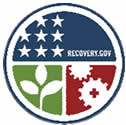Safety Eligibility Letter B-170B
Download Version
PDF [436 KB]

U.S. Department of Transportation
Federal Highway Administration
1200 New Jersey Ave. S.E.
Washington, D.C. 20590
September 14, 2009
In Reply Refer To: HSSD/B-170B
Mr. Donald S. Turner
Traffic Safety and Design Engineer
South Carolina Department of Transportation
P.O. Box 191
Columbia, SC 29202-0191
Dear Mr. Turner :
This letter is in response to your most recent request for the Federal Highway Administration (FHWA) acceptance of a roadside safety system for use on the National Highway System (NHS). Related to this request is the existing FHWA Acceptance Letter B-170A requesting the South Carolina’s DOT (SCDOT) immediate attention regarding issues that rendered Acceptance Letter B-170 inadequate. Since your current submission has addressed these issues, your request is that we find the following system acceptable for use on the NHS under the provisions of National Cooperative Highway Research Program (NCHRP) Report 350 “Recommended Procedures for the Safety Performance Evaluation of Highway Features.”
| Name of system: |
South Carolina DOT (SCDOT) Temporary Concrete Barrier |
|---|
| Type of system: |
Temporary Concrete Barrier Wall and Anchorage |
|---|
| Test Level: |
NCHRP Report 350 Test Level 3 (TL-3) |
|---|
| Testing conducted by: |
Acceptance via Equivalence and Computational Analysis conducted by South Carolina Department of Transportation |
|---|
| System Designator: | SWC13 |
|---|
| Date of request: | July 27, 2009 |
|---|
Requirements
Roadside safety systems should meet the guidelines contained in the NCHRP Report 350, “Recommended Procedures for the Safety Performance Evaluation of Highway Features”. FHWA Memorandum “ACTION: Identifying Acceptable Highway Safety Features” of July 25, 1997, provides further guidance on crash testing requirements of longitudinal barriers.

Description
The SCDOT concrete bridge barrier (barrier) is a temporary barrier system that incorporates temporary anchorage. The barrier is 32 inches high, 6 inches wide at the top, and 24 inches wide at the base. The barrier is a New Jersey profile concrete barrier that was successfully crash tested per NCHRP Report 350 and accepted on NHS highways as per Acceptance Letter B-98 as a free standing barrier. The current request for anchored barrier required revised reinforcement as per the attached design computation and specifications. In addition the specified anchor system(s) for this temporary barrier are as follows:
- As specified in FHWA B-5, except generic and non-proprietary materials shall be specified. The anchors will be 16 inch long and 1 inch diameter A449 fully threaded galvanized rods. Each 10 foot section of temporary concrete barrier will be anchored on the traffic side with five (5) anchors. The anchor rods will pass through a slot fabricated into the barrier wall and inserted into a 1 1/8-inch diameter hole 6-1/2 inches deep into the concrete bridge deck. Each anchor will be secured in the anchor hole with a two-component epoxy-resin bonding agent. Drawings illustrating the temporary concrete barrier with the anchorage system are as per FHWA B-5, as are the epoxy grouting specifications.
- As specified through-bolt anchor system design computation as attached to this correspondence that utilizes variable length 1-inch diameter A449 fully threaded galvanized bolts for anchors. Each 10-foot section of barrier wall will be anchored on the traffic side with five (5) anchors. The anchor bolt will pass from underneath the bridge deck through a barrier washer, the bridge deck via a typical 1 1/8-inch diameter hole drilled through the bridge deck, a slot fabricated into the barrier wall, a second barrier washer, and a heavy hex nut. To secure each anchor, tighten the nut of the anchor system snug and peen the threads of the anchor bolt to prevent back turning of the nut. Repeat this procedure for each anchor.
Findings
We concur that based upon equivalence and computation the SCDOT Temporary Concrete Barrier meets all barrier structural adequacy and vehicle trajectory criteria as outlined in NCHRP Report 350 and is acceptable for use on the NHS as a TL-3 barrier when allowed by the highway agency. Please note the following standard provisions that apply to FHWA letters of acceptance:
- This acceptance is limited to the crashworthiness characteristics of the system and does not cover their structural features, nor conformity with the Manual on Uniform Traffic Control Devices.
- Any changes that may adversely influence the crashworthiness of the system will require a new acceptance letter.
- Should the FHWA discover that the qualification testing was flawed, that in-service performance reveals unacceptable safety problems, or that the system being marketed is significantly different from the version that was crash tested, we reserve the right to modify or revoke our acceptance.
- You will be expected to supply potential users with sufficient information on design and installation requirements to ensure proper performance.
- You will be expected to certify to potential users that the hardware furnished has essentially the same chemistry, mechanical properties, and geometry as that submitted for acceptance, and that it will meet the crashworthiness requirements of the FHWA and the NCHRP Report 350.
- To prevent misunderstanding by others, this letter of acceptance is designated as number B-170B and shall not be reproduced except in full. This letter and attached computational documentation upon which it is based are public information. All such letters and documentation may be reviewed at our office upon request.
- This acceptance letter shall not be construed as authorization or consent by the FHWA to use, manufacture, or sell any patented system for which the applicant is not the patent holder. The acceptance letter is limited to the crashworthiness characteristics of the candidate system, and the FHWA is neither prepared nor required to become involved in issues concerning patent law. Patent issues, if any, are to be resolved by the applicant.
| |
Sincerely yours,

David A. Nicol
Director, Office of Safety Design
Office of Safety
|
Enclosures


